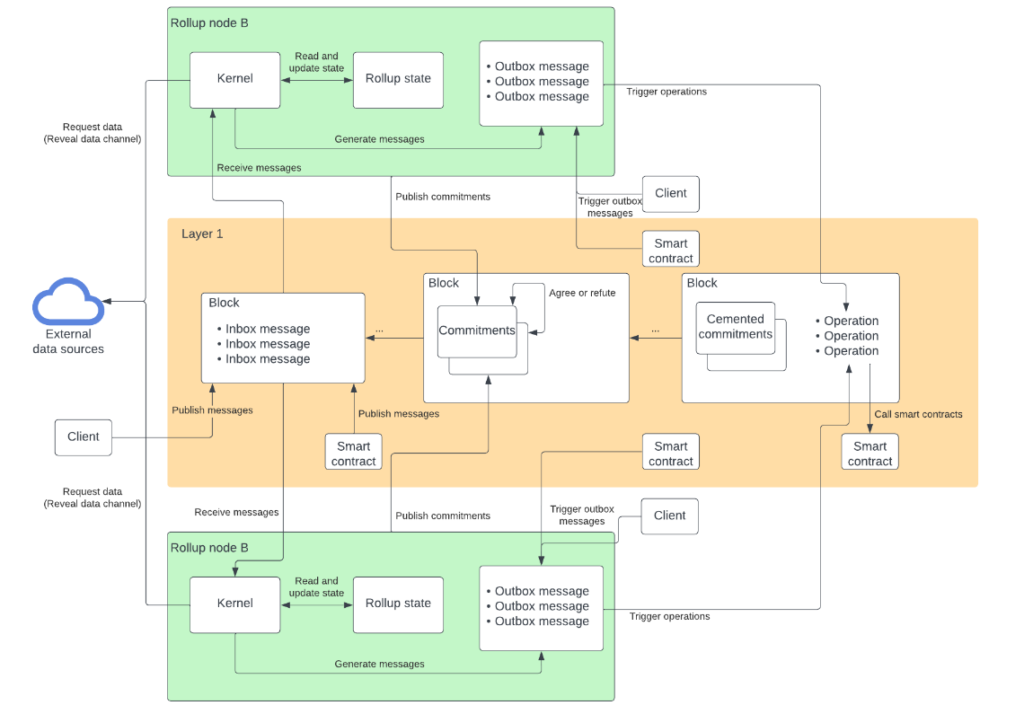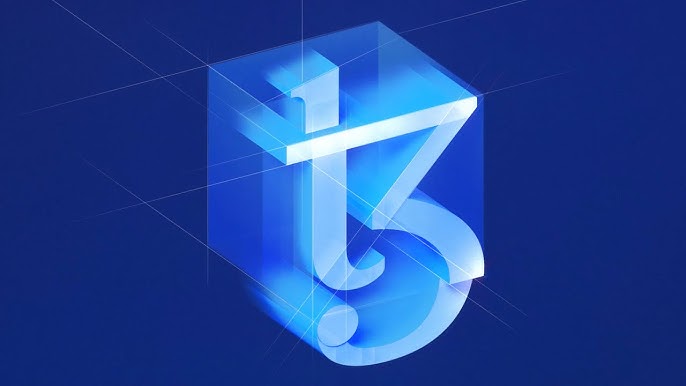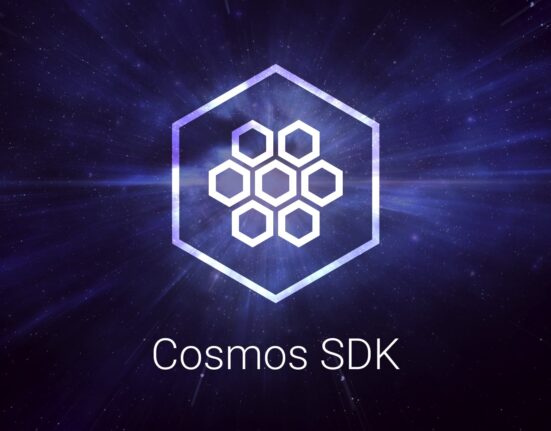The title of this article contains three technical terms, followed by a simple question. But to answer the question, we need to get a good grasp of the nuance of the first three words – Tezos, Smart & Rollups. Let’s do it.
‘Tezos’ in the Tezos Smart Rollups refers to the open-source blockchain network that distinguishes itself from the likes of Bitcoin and Ethereum by introducing a protocol for upgrading and amending itself in a decentralized fashion without needing to fork the main network.
The term “Rollups” in the title suggests that our area of interest is the layer-2 solution built on and for the Tezos network that improves transaction throughput and, hence, the network’s scalability. The “Smart” in the title comes from the concept of Optimistic “Smart” rollups. This brilliant validation mechanism is the backbone of their security. We’ll learn more about these. Now.
Now that we have our basics clear, let’s try to understand how they actually work.
The workings of Tezos Smart Rollups primarily follow three simple steps.
-
- Origination
- Commitments
- And Refutation

Ref: https://docs.tezos.com/architecture/smart-rollups
The first part starts with smart contracts. Tezos smart contracts of a particular rollup hold the responsibility of managing the state and data on the Tezos network. The finalization of transactions happens here. The deployment of smart contracts on Tezos is done through a process called “Origination.” The network has a protocol that defines a few critical details about the rollup during this “Origination”.
Transactions are bundled together off-chain with the help of sequencers. These transactions are then executed, and the off-chain state is updated accordingly. This state then can be published to the main network as a hash called “Commitment.” Any node that can stake 1000 Tez tokens can publish this “Commitment” to layer-1 or Tezos’ main network. When the same hash gets published by multiple nodes, the stakes get combined for a single stake of “commitment.”
This is followed by the “refutation period,” which begins when the first commitment is published. The transactions are assumed to be valid by default, and a window is given for dispute resolution if two or more nodes publish different “Commitments.” Then, the “refutation game” begins automatically between them.
The “refutation game” or the dispute management mechanism is an interesting case study on how the network incentivizes more nodes to actively hunt and challenge the published data and how it decentivizes the fraudulent nodes. And it goes like this.
Everyone who can publish data has staked at least 1000 Tez tokens to be able to do that. A refutation game can only result in two possible outcomes. Each with predefined consequences.
- Both commitments are invalid – in this case, the network burns the staked Tez tokens for both of them.
- One is valid, and another is not – in this case, the network burns half of the staked tokens from the fraudulent nodes and transfers the remaining half to the valid node.
This results in an interesting incentive system where the fraudulent node will permanently lose all of its staked tokens if there is a dispute. And all the participating nodes will always have the reward to look for any fraudulent activity in the network. The presence of at least one honest node makes this system work like a charm.
If there is no dispute and only one commitment is left because all the nodes posted the same hash or if an honest node beats everyone, the commitment becomes final at the end of the dispute period. It gets posted to the layer 1 and becomes immutable.
This dispute period can last for around two weeks as of writing this article. However, given the upgradable nature of the Tezos network, this can change in the future.
And because in case of no dispute, the transactions get finalized by default, assuming all the data was valid, these rollups are also called as Optimistic Smart Rollups.
Conclusion and summary:
The workings of Tezos Smart Rollups happen in three phases: Origination, Commitment, and Refutation. Each phase handles different aspects of the transaction life cycle. Ultimately ensuring robust security and scalability.

Raksha, a seasoned journalist, specializes in crafting insightful narratives on blockchain and AI developments. With a keen eye for innovation, she distills complex topics into accessible stories, providing readers with a clear understanding of the dynamic intersection between these transformative technologies.







